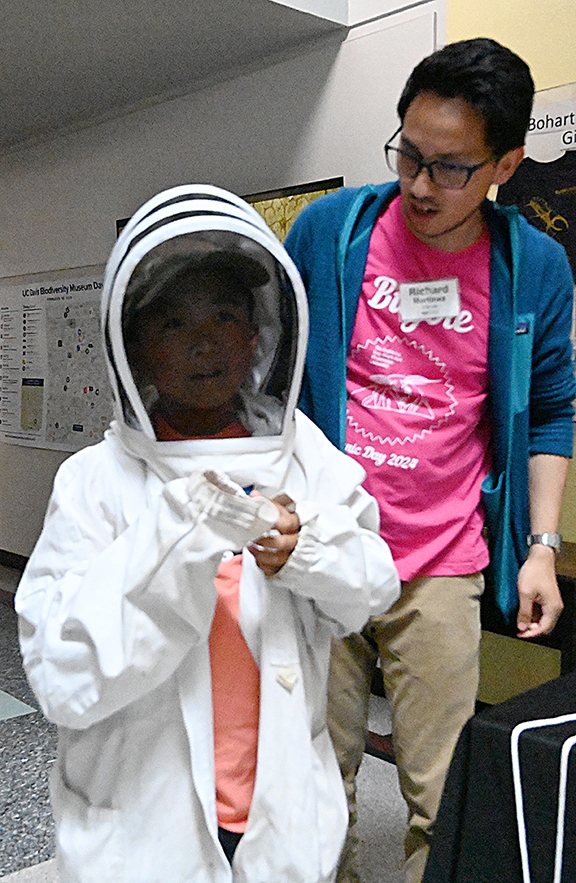
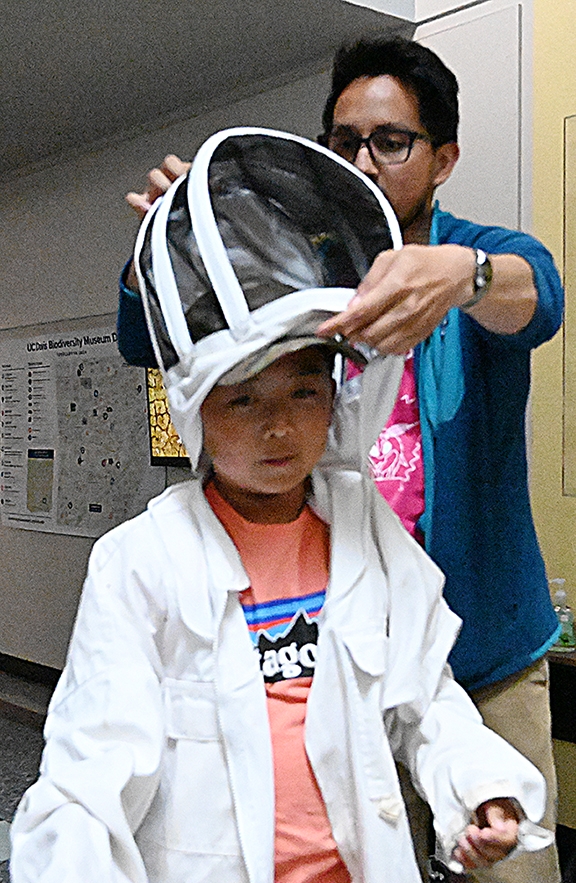
That was the consensus at the Bohart Museum of Entomology open house when attendees tried to locate the queen in the bee observation hive at a table staffed by UC Davis graduate student Richard Martinez of the Elina Lastro Niño lab, Department of Entomology and Nematology.
Martinez purposefully didn't mark the queen.
"Most kids thought the queen was going to be marked--common beekeeping practice--but mine wasn't, so they thought that was unfair," Martinez quipped. "Only one kid was able to find the queen. And it was toward the end of the event. The queen was laying an egg when we found her."
The drones, the males, also drew avid interest.
"After I mentioned the hive has drones, what i referred to as 'the boys'--it helps kids understand their role in the hive--they were fascinated with finding the drones, which they did."
Most kids, however, confused drones for the queen, Martinez said.
Attendees, both adults and youth, delighted in trying on the beekeeper veils and suits, and examining the hive tools and other apiary equipment.
"A lot of the kids asked what bees do inside the hive," Martinez said. "So I went through my list of roles honey bees carry out. One family was super invested in the science behind honey bee research, particularly nutrition, which is what I study."
"It was a pretty fun event," he said.
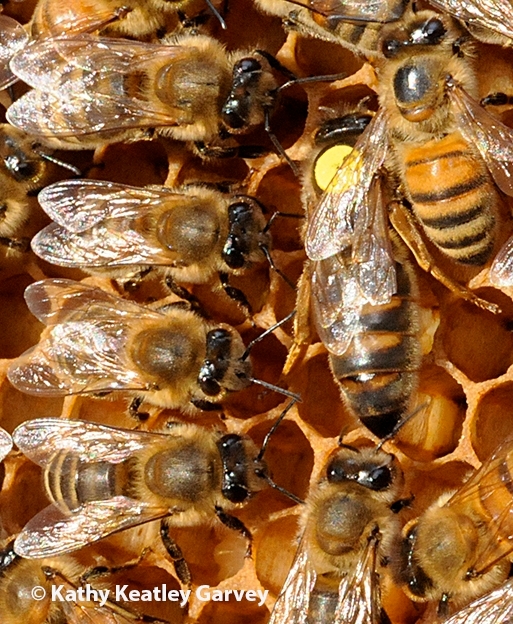
The queen bee, the largest bee in the colony, has a long, narrow, pointed abdomen, and shorter wings than the worker bee. The worker has a rounded abdomen and wings that extend almost to the end of the abdomen. The drone, stout in body, has what some call "wrap around eyes."
The Bohart Museum open house, held May 19 not only featured honey bees (managed bees) but wild bees. (More images pending)
Martinez, a master's student, studies honey bee health, specializing in nutrition, in the lab of E. L. Niño, associate professor of Cooperative Extension, and a member of the UC Davis Department of Entomology and Nematology faculty.
Martinez recently helped staffed the UC Davis Entomology Graduate Student Association (EGSA) t-shirt booth at Briggs Hall during the 110th annual UC Davis Picnic Day, where he and fellow graduate students wore "Bugbie" shirts. The t-shirt, designed by Marielle Hansel Friedman, a second-year doctoral student in the lab of urban landscape entomologist Emily Meineke, features a rosy maple moth, Dryocampa rubicunda. (EGSA offers a variety of t-shirts on its sales website at https://ucdavisentgrad.square.site/.)
The Bohart Museum, located in Room 1124 of the Academic Surge Building, 455 Crocker Lane, UC Davis, houses a global collection of eight million insects, plus a live petting zoo, and a gift shop. Professor Jason Bond, the Evert and Marion Schlinger Endowed Chair of the Department of Entomology and Nematology, and the associate dean, UC Davis College of Agricultural and Environmental Sciences, directs the museum. He also serves as president-elect of the American Arachnological Society.
The next open houses are set for
- Saturday, July 20: "Moth Night at the Museum," 7 p.m. to 11 p.m.
- Saturday, Sept. 28: "Museum ABCs: Arthropods Bohart, and Collecting," 1 to 4:30 p.m.
All open houses are free and family friendly; parking is also free on weekends.
Summer public walk-in hours are on Tuesdays, June 17-Aug. 27 from 9 a.m. to noon, and from 1 to 4 p.m. The museum will be closed to the general public from Sept. 1-22.
For more information, access the website at https://bohart.ucdavis.edu or contact bmuseum@ucdavis.edu.
Attached Images:
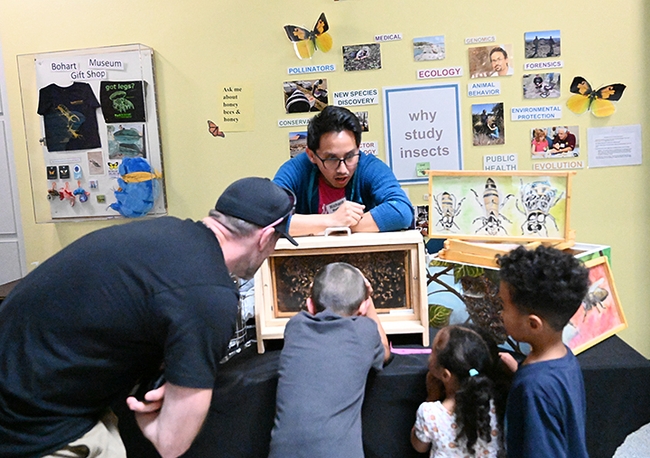
UC Davis entomology graduate student Richard Martinez encourages attendees to find the queen in the bee observation hive. (Photo by Kathy Keatley Garvey)
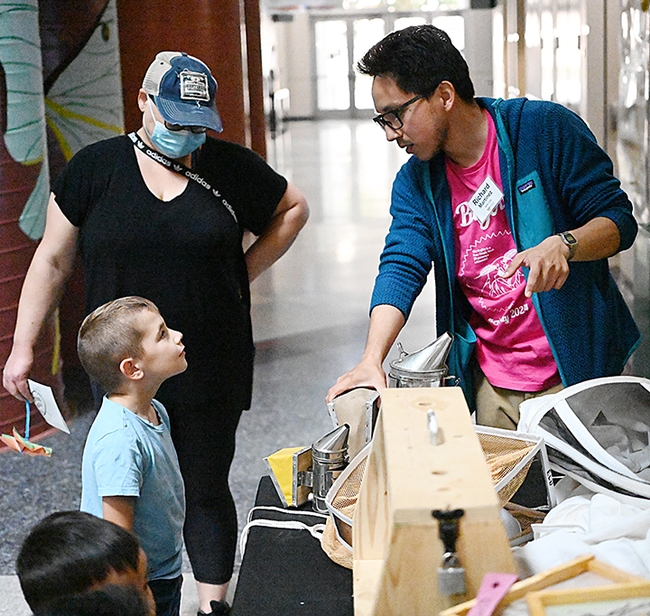
A very focused youngster asks UC Davis graduate student Richard Martinez a question about honey bees at the Bohart Museum of Entomology open house. (Photo by Kathy Keatley Garvey)
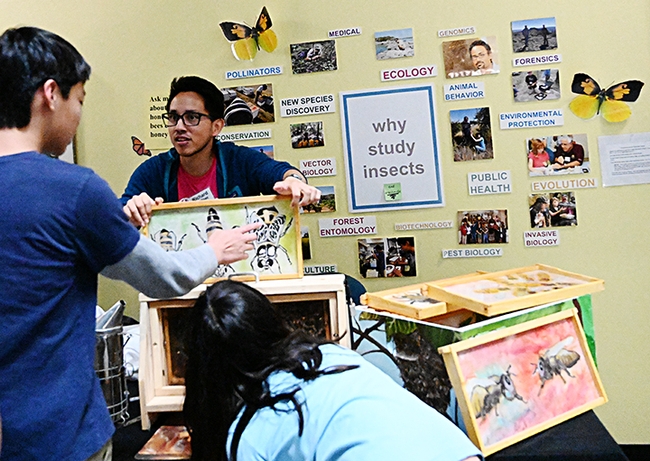
UC Davis entomology graduate student explains how to identify the queen, male and the worker bees. (Photo by Kathy Keatley Garvey)
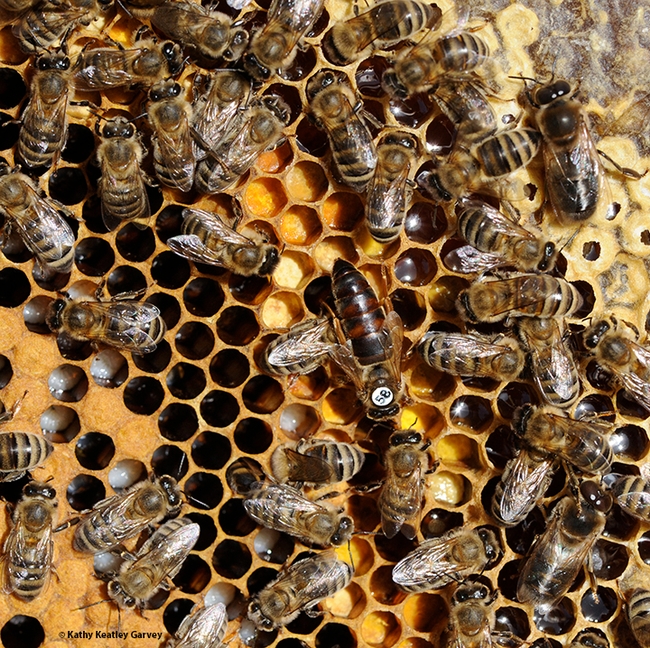
Queen bee (center) with workers and a drone (top right). (Photo by Kathy Keatley Garvey)
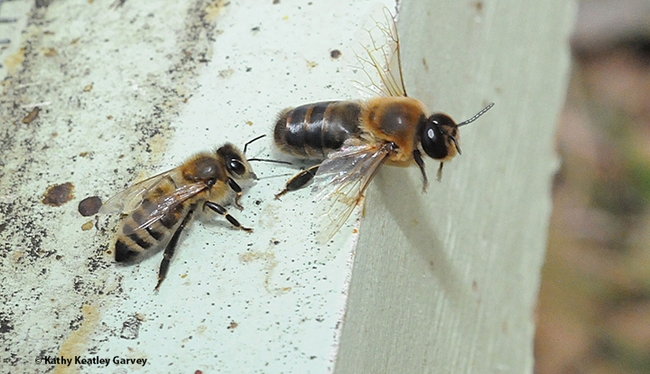
A worker bee (left) and a drone. (Photo by Kathy Keatley Garvey)